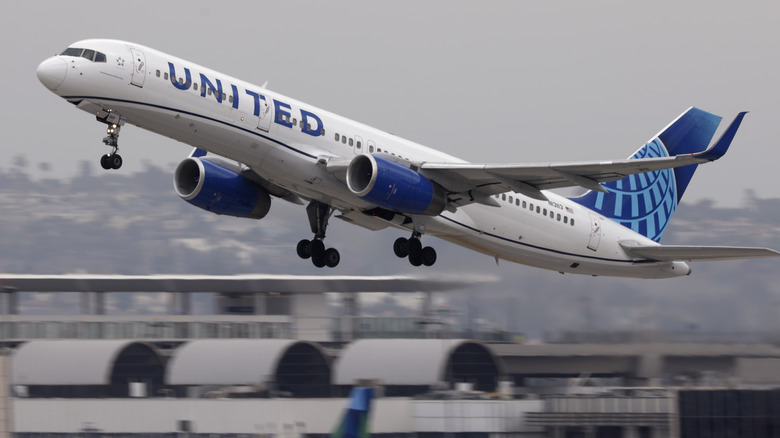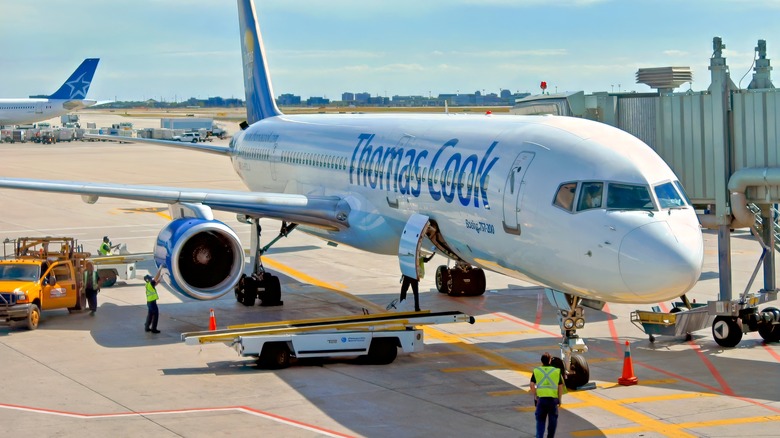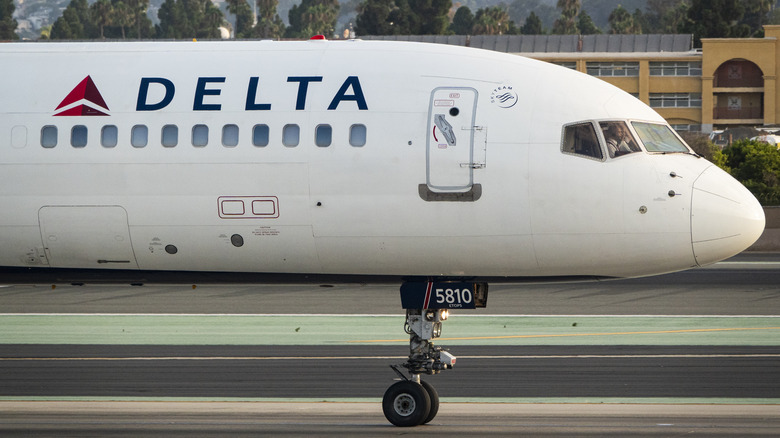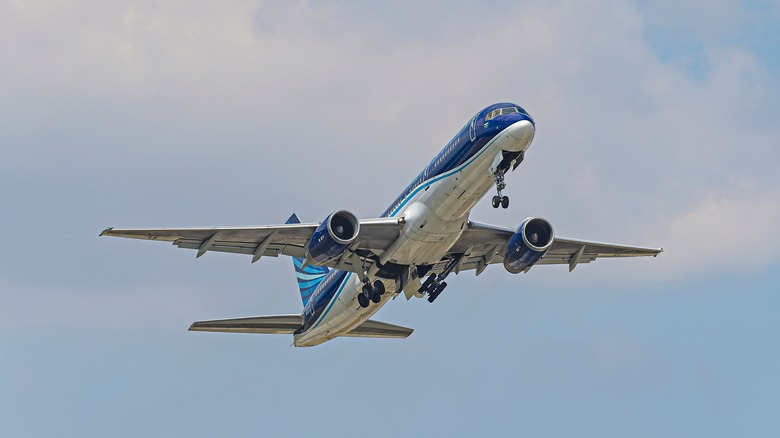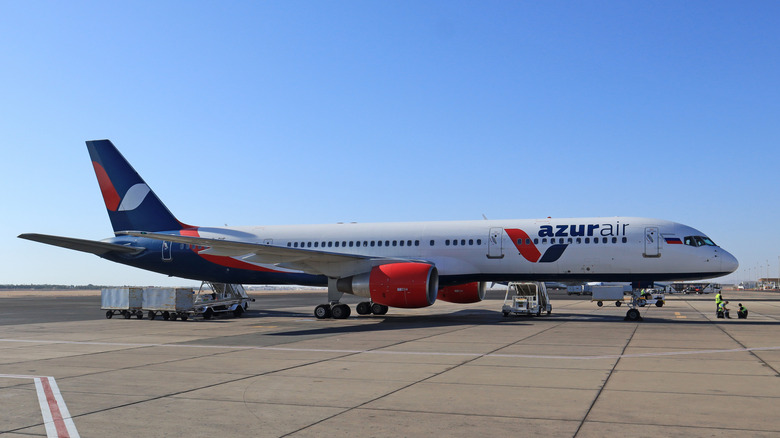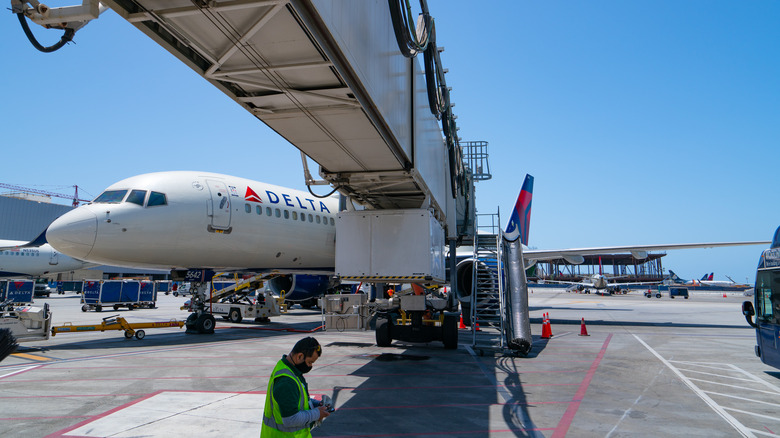5 Reasons Why Pilots Love The Boeing 757
Boeing's status in the global aircraft industry is only rivaled by the European powerhouse that is Airbus. For the occasional flier, it may be difficult to tell the difference between the two juggernauts' aircraft, and between specific models within airplane families. Those in the industry, however, can identify differences that go beyond more spacious cabins and improved seats.
What's the viewpoint of the pilots who shoulder the responsibility of flying these magnificent machines? There are few aircraft as popular as the iconic Boeing 757 jet, a versatile narrow-body that was produced in several variants over its long life in service.
Capt. Richard Levy was a commercial pilot for four decades before retiring in 2018. He continues to work as a flight-crew training instructor, and has offered SlashGear his extensive insight on Boeing's 757 and how it feels to fly. Let's see how the model performs and what it offers from the pilot's point of view.
A smooth, amply powerful ride
In any field, it's unfair to offer a verdict on a product or service without first having attained a lot of experience with it. Captain Levy is well positioned to offer his expertise as a long-time flyer of the popular Boeing model. He told SlashGear, "I flew the Boeing 757-200 for approximately 15 years and loved every second from takeoff to landing!" That's a glowing capsule review by anyone's standards, but just what is it about the aircraft that's so appealing to him?
To help understand that, we'll need to first take a look at the plane's specs. The 757-200 is equipped with Pratt & Whitney or Rolls-Royce engines, of the PW2037/PW2040/PW2043 or RB211-535E4/RB211-535E4B varieties respectively. Rolls-Royce's lineup offers more potential power. Boasting up to 43,500 pounds of thrust compared to its Pratt & Whitney counterpart's 40,100 pounds (in its PW2040 guise). The plane is just over 155 feet long with a wingspan of almost 135 feet, and can cruise at around 525 mph. These capabilities aren't spectacular, but were designed with practicality and utility in mind. As a result, the model offers the performance Levy so admires.
The engines are potent enough, he told us, that "even with a full load of passengers and fuel, it could climb rapidly, whether taking off at any of the ski resorts in the United States or high elevation airports in Central or South America."
It served some enjoyable routes and airports
Commercial aircraft are designed, first and foremost, to be practical to operate. A model that's too expensive to run won't be profitable or realistic to keep in the air, a primary factor in why the Anglo-French aviation icon that was the Concorde supersonic jet failed. This isn't just a matter of fuel-efficient design, but also of ensuring that a model will suit the routes it's intended for.
Boeing's 757, which we ranked among the top 5 of Boeing's passenger jets, spends a lot of its flying time in the Americas, which means it must negotiate some challenging airports. As a narrow-body, it's more versatile when it comes to takeoff and landing locations (albeit on shorter routes), and North and South America offer some challenging airports indeed. Levy highlights five examples: Vail, Colorado; Jackson Hole, Wyoming; Quito, Ecuador; La Paz, Bolivia; and Tegucigalpa, Honduras. All are characterized, the pilot explained, by "mountainous areas, high elevation, and relatively (but safe) shorter runways," difficult conditions he reveled in, reporting that they offered "challenging, but fun approaches and landings."
To operate in such conditions, without having to compromise on profitability in passenger numbers or the aircraft's cargo, was key. "Rarely, if ever, was I limited on either because of operating into or out of any of the above airports in the mighty Boeing 757-200," concluded Levy. It's another huge boon for the versatile aircraft.
Its shortcomings generally proved more than manageable
The 757 family proved an effective narrow-body workhorse, having the virtues it needed in all the right places. Nonetheless, it has its shortcomings, too, and Levy's deep affection for the model didn't prevent him from addressing them. One of the biggest was the plane's range. The 757-200 could only carry up to 11,489 gallons of fuel, and this posed something of a problem when returning to the U.S. from Europe.
"Not having large fuel tanks and flying westbound into the headwinds would sometimes mandate a refueling in Bangor, Maine, or Boston," Levy explained. This, naturally, elongated flights and made them more costly, but this didn't dampen the pilot's enthusiasm for the plane. After all, there's no perfect aircraft, and the key to earning a profit with commercial models is reliability and emphasizing their strong points.
In this sense, the 757 was a great fit for the role it settled into. "The 757 was originally designed for short-to-medium routes," Sam Weigel, who marked two decades flying commercial aircraft in June, wrote in Flying magazine, "but it has found its true niche as a capable transcontinental, intercontinental and secondary-market transatlantic hauler."
There's more to a pilot's affection for an aircraft than its performance, however. The 757 also has a reputation for being large and comfortable. It has some features that made it special for the time it was introduced, in both its mechanics and its wider design.
It blends advanced functionality and user-friendliness
With any device, gadget, or vehicle, balancing between providing a range of sophisticated features and remaining easy to use is difficult. There are few vehicles more intimidating to the newcomer than an aircraft's cockpit, replete with buttons, dials, levers, and readouts. Another important virtue pilots have praised the 757 family for, with this in mind, is how it balances these factors.
Weigel waxed lyrical about these very virtues of the 757, declaring it "a modern classic." One of his favorite things was the cockpit's equipment and comfort. Its equipment, he wrote, offers "a lot of capability," with two flight-management systems, "dual GPS, triple ring-laser gyro IRS" (inertial reference system) and other boons, including a sextet of cathode-ray-tube screens. Everything is organized logically and within convenient reach for the pilot, Weigel wrote. "In 1982, this was a truly revolutionary airplane."
For those who spend the most time in them, it's crucial that the planes have comfortable cockpits. The shape of the 757's nose and positioning of its fuselage, according to Weigel, makes for a cockpit that's surprisingly spacious.
Boeing's recent struggles haven't harmed the 757's reputation
Even with the 757's pilot-friendly nature and performance, there's a considerable elephant in the room to reckon with: It's a Boeing. While the company has been in the business since 1916, enjoying countless successes, there's no denying that it has also endured considerable setbacks, particularly regarding its 737-MAX.
Fatal crashes in 2018 and 2019 killed all 346 people aboard two 737-MAX planes. Then this January, a door plug ejected from an Alaska Airlines 737-9 MAX. And the 757 family itself made unfortunate headlines in July, when a wheel detched from the landing gear of a 757-200 departing LAX for Denver. No major injuries were reported in the January event, and none at all in the June one, but they were potentially harmful chapters — and Boeing's safety controversies have had some huge consequences.
SlashGear wondered, then, how Levy felt about such events, and whether the 737 MAX's problems would tarnish the legacy of the Boeing 757. He was emphatic in his response.
"Absolutely not," said Levy, going on to highlight what he sees as the importance of separating the Boeing models. "I work with aviators from various airlines, and I have never heard one comment connecting the wonderful Boeing 757 with the very successful and profitable Boeing 737 MAX." And, he added, "In my opinion, the regretful past two major accidents of the Boeing 737 MAX have been rectified through aircraft system modifications and updated crew training."
